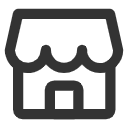- Attractions in Morocco
- Language
- Arabic is the official language, with Moroccan Arabic (Darija) widely spoken among the locals, offering a unique dialect distinct from classical Arabic. Berber, or Tamazight, holds official language status as well, reflecting the country's commitment to preserving its indigenous heritage. French serves as a de facto second language, widely used in business, government, and higher education, a legacy of colonial history that facilitates communication with Francophone visitors. While English is increasingly accepted, especially within major tourist destinations, its prevalence is notably less compared to French. However, the growing global influence of English has led to its expanded presence in educational institutions and among the younger population, making it a useful language for travelers. Spanish is also spoken in the northern regions, near the Spanish enclaves of Ceuta and Melilla. Overall, Morocco's linguistic landscape is a testament to its historical layers and modern global interactions, making it an accessible destination for speakers of major world languages.
- Best time to visit
- The best time to visit Morocco is during spring (March to May) and fall (September to November). These periods offer the most pleasant weather, with mild temperatures perfect for exploring the bustling medinas, majestic mountains, and serene deserts. Spring brings the landscape to life with blooming flowers and greenery, making it ideal for hiking and nature tours. Fall, on the other hand, provides comfortable weather for city tours, beach visits, and desert excursions, without the extreme heat of summer or the chill of winter. These seasons also avoid the peak tourist influx, allowing for a more authentic experience of Morocco's rich culture and stunning landscapes.
- Festivals
- Date: JuneFestival name: Fez Festival of World Sacred MusicHeld annually in the spiritual and cultural heart of Morocco, Fez, this festival brings together musicians from across the globe to perform in palaces, gardens, and historic venues. The event promotes peace and spiritual unity, offering travelers a profound experience of musical diversity and the city's architectural beauty.
- Date: JulyFestival name: Marrakech Popular Arts FestivalA vibrant showcase of Moroccan folk music, dance, and art, this festival transforms the streets of Marrakech into a colorful spectacle. Visitors can enjoy Berber music performances, horse-riding displays, and traditional dances, providing a deep dive into Morocco's rich cultural heritage.
- Local cuisine
- Couscous
- A staple of Moroccan cuisine, couscous consists of small steamed balls of crushed durum wheat semolina, traditionally served with a stew of meat (often chicken or lamb) and vegetables. It is prepared by steaming in a special pot called a couscoussière and is significant in Moroccan culture as a dish of unity and blessing, often enjoyed during special occasions and family gatherings.
- Tagine
- This slow-cooked, savory stew derives its name from the earthenware pot in which it is cooked, featuring a unique mix of meat (such as lamb, chicken, or beef), vegetables, spices, and sometimes fruits, creating a tender and aromatic dish. Tagines are a symbol of Moroccan hospitality and communal eating, embodying the country's rich culinary traditions and the importance of sharing meals.
- Harira
- A rich soup made from tomatoes, lentils, chickpeas, onions, and beef or lamb, seasoned with a blend of herbs and spices, harira is traditionally consumed to break the fast during Ramadan, highlighting its cultural significance as a nourishing and comforting dish that brings families together.
- Mint Tea
- Known as "Moroccan Whiskey," this sweetened green tea, flavored with fresh mint leaves, is not only a beverage but a sign of Moroccan generosity and hospitality. It is prepared in a special teapot and poured from a height to create a froth, served to guests in almost every social situation, symbolizing warmth and friendship.
- Packing
When visiting Morocco, packing should be versatile to accommodate its diverse climates. For clothing, bring lightweight, breathable fabrics for the day and warmer layers for cooler evenings, especially in the desert or mountains. Respect local culture by choosing modest attire, covering shoulders and knees. A sturdy pair of walking shoes is essential for exploring cities and rugged landscapes. Don't forget a sunhat, sunglasses, and sunscreen for protection against the intense sun. A lightweight scarf can be useful for both warmth and as a cover-up in conservative areas. For electrical gadgets, include a power adapter for Morocco's Type C and E outlets. Lastly, pack a small daypack for day trips and a reusable water bottle to stay hydrated.
- Currency
In Morocco, the official currency is the Moroccan Dirham (MAD). Banknotes come in denominations of 20, 50, 100, and 200 MAD, while coins are available in 1, 2, 5, and 10 MAD, as well as smaller centime values. ATMs are widely available in cities and larger towns, offering a convenient way to withdraw cash. However, it's advisable to have some cash on hand when traveling to rural areas or for small purchases, as not all vendors accept credit cards. Major hotels, restaurants, and shops in urban areas generally accept credit cards, with Visa and MasterCard being the most widely accepted. It's always a good idea to inform your bank of your travel plans to avoid any issues with card usage abroad.
- Transport
Morocco's transportation network is well-developed, offering various options for international travelers and in-country movement. The country is served by several major international airports, with Mohammed V International Airport in Casablanca being the largest and a primary entry point for foreign visitors. Other significant airports include Marrakesh Menara Airport and Tangier Ibn Battouta Airport, facilitating access to different regions. For travel within Morocco, there are multiple options: trains, buses, taxis, and car rentals. The train system, operated by ONCF, is reliable and covers major cities, offering a comfortable way to see the country. Buses provide wider coverage, reaching more remote areas not serviced by trains. Taxis are readily available for short distances; remember that there are two types: petit taxis for city travel and grand taxis for longer distances between cities. Renting a car offers flexibility but be prepared for diverse driving conditions. To navigate Morocco's transportation system efficiently, it's advisable to plan ahead, especially for train and bus tickets, and always have some cash on hand for taxis and smaller towns.
- Emergency
Travelers to Morocco should be mindful of several cultural taboos to ensure respectful interaction with locals. Public displays of affection are frowned upon, especially outside of major cities. Dress modestly, particularly when visiting mosques or traditional neighborhoods, to avoid offending local sensibilities. It's also considered impolite to refuse an offer of mint tea, a sign of hospitality. When photographing people, always ask for permission first, as some may find it disrespectful or intrusive. Regarding alcohol consumption, it is legal but should be done discreetly, respecting the predominantly Muslim population's customs. In case of emergency, dial the national emergency number 19 for police, 15 for medical emergencies, and 15 for the fire department. These numbers can be crucial for travelers in need of immediate assistance.
- Power socket
In Morocco, the electrical system operates at a standard voltage of 220 V and a frequency of 50 Hz, which is compatible with appliances from many other countries in Europe, Asia, and Africa. However, visitors from regions with a different standard, such as North America, may need a voltage converter for their devices. The country primarily uses two types of power sockets: type C, known as the "Euro" plug, and type E, which is characterized by two round pins and a hole for the socket's male earthing pin.



